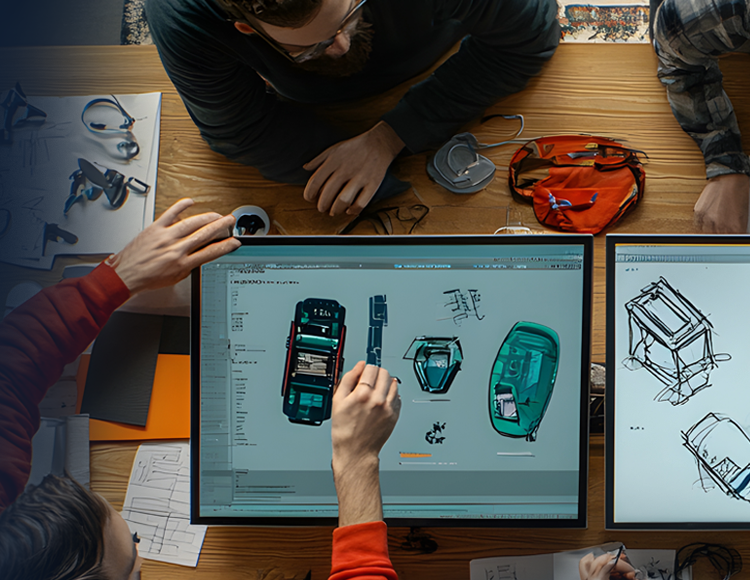Get It Right Before You Build a Wireless Device
Transparent Feasibility is the Make-or-Break Moment for Wireless Product

Bringing a wireless embedded device to market isn’t just about innovation — it’s about execution. And most products that fail don’t fail in testing or manufacturing — they fail in planning. Transparent feasibility gives you the clarity, confidence, and control to make smart decisions early, avoid costly detours, and build a product that works in the real world.
The Hidden Complexity Behind Wireless Devices
Building a connected device—especially one using advanced wireless technologies like cellular, Bluetooth, Wi-Fi or LoRaWAN — is an exciting opportunity. But the road from concept to commercial success is lined with pitfalls: RF performance issues, integration challenges, supply chain risks, and a fast-moving regulatory landscape among many others. At Bittium, we believe that the single most critical phase in this journey is the Feasibility Study & Concepting. This is where you identify the landmines before you step on them—and where transparency makes all the difference.
What Happens in Feasibility & Concepting
This phase is all about exploration, validation, and alignment. It’s where we work with you to answer mission-critical questions:
- What will it cost and how long will it take? Realistic early estimates help set expectations and guide investment decisions.
- Is the concept technically feasible? Can it be built with today’s or near-future tech?
- What are the key technical risks? For wireless performance, this could include challenges with antenna integration, interference, or power optimization.
- Which wireless protocol fits best? We assess all options against your requirements (range, bandwidth, power, cost, device size).
- What are our architecture options? We map out potential high-level system structures and integration strategies.
- Where are the supply chain risks? Any hard-to-source components that could delay or derail development?
- What about compliance? We factor in all relevant requirements, such as the EU’s Radio Equipment Directive (RED) and the upcoming Cyber Resilience Act (CRA) if the EU is one of your target markets, ensuring compliance doesn’t cause problems down the line.
This phase isn’t theoretical. Our team brings deep expertise in embedded systems, RF design, and real-world product development to stress-test your concept from every angle.
Why Transparency Changes Everything
Here’s where we do things differently: we make the entire feasibility phase radically transparent. That means shared data, open discussions, and joint decision-making from day one.
- Shared Understanding = Lower Risk
You’re not handed a black box or vague recommendation. We walk you through our technical assessments, risk analysis, and architecture evaluations. You see the trade-offs—like cost vs. performance or size vs. battery life — and participate in shaping the right direction. This clarity improves risk reduction, and cost efficiency, while enhancing accessibility of information for your teams. - Data-Driven Decisions, Not Guesswork
You can make go/no-go calls, pivots, or prioritizations based on solid data — not assumptions. When you understand why we suggest a certain architecture or technology, you gain confidence in the roadmap ahead. Enabling informed decision-making, you avoid uncertainty and accelerate your team’s time-to-insight aligning all stakeholders. - Regulatory Confidence from Day One
We don’t wait until development is finished to talk compliance. We start aligning with all relevant requirements during concepting. Whether it’s RF exposure limits, transmission power, EMC, or secure system architecture. That early awareness prevents expensive last-minute redesigns. This gives you reduced regulatory friction, avoids costly rework, helping you meet your critical target windows. - Trust Built on Expertise and Openness
We don’t just tell you we’re experts — we show you. You see how we evaluate, the risks we flag, and the constraints we manage. That transparency builds trust and fosters a true partnership—not just a vendor relationship. We are your trusted advisor, reinforcing our value as a long-term partner, rather than a transactional vendor.
What You Walk Away With
By the end of feasibility and concepting, you don’t just have a pretty PowerPoint. You have:
- A technically validated concept
- A clear high-level system architecture
- Identified risks and how to mitigate them
- Preliminary cost and timeline projections
- Regulatory awareness mapped to design decisions
- Full alignment between your business goals and technical path
The Bottom Line
You only get one shot at building it right. Transparent feasibility gives you the foundation to succeed—technically, commercially, and strategically. So before you invest big, explore boldly and evaluate openly.
Anssi Saarela, Director, Bittium
Anssi Saarela has over 25 years of product development expertise, primarily with high-tech products unified by wireless connectivity. His passion for technology and global cultures has facilitated collaborations with customers and vendors worldwide, including time spent as an expatriate in the USA. In his current role at Bittium, Anssi holds comprehensive responsibility for business performance and operational delivery in the Engineering Services business unit, engaging with both customers and internal teams.

Have a Product Concept In Mind?
Let’s talk about how Bittium’s transparent feasibility process can de-risk your development and set your project up for success.
.